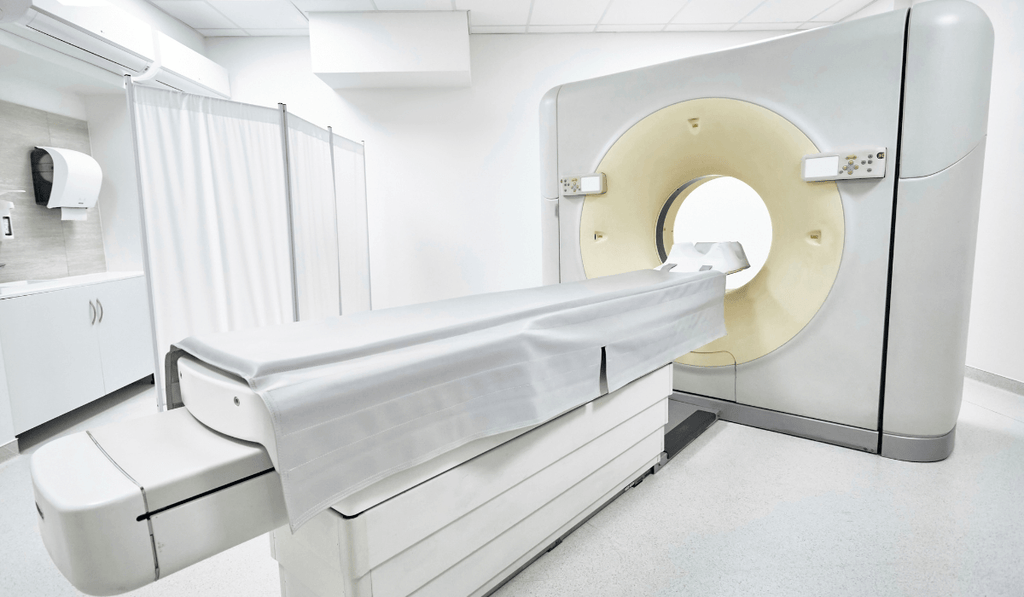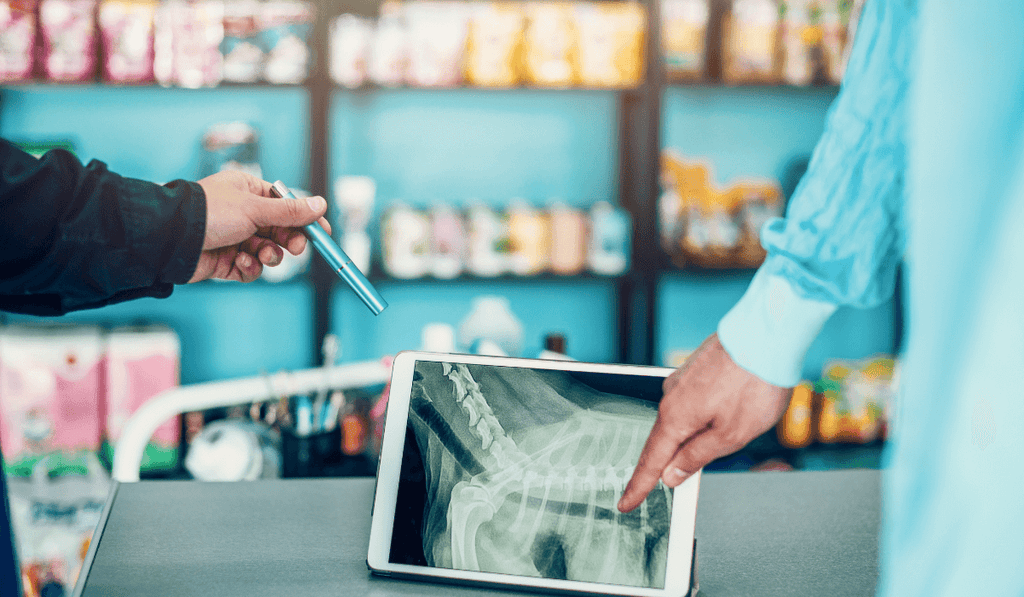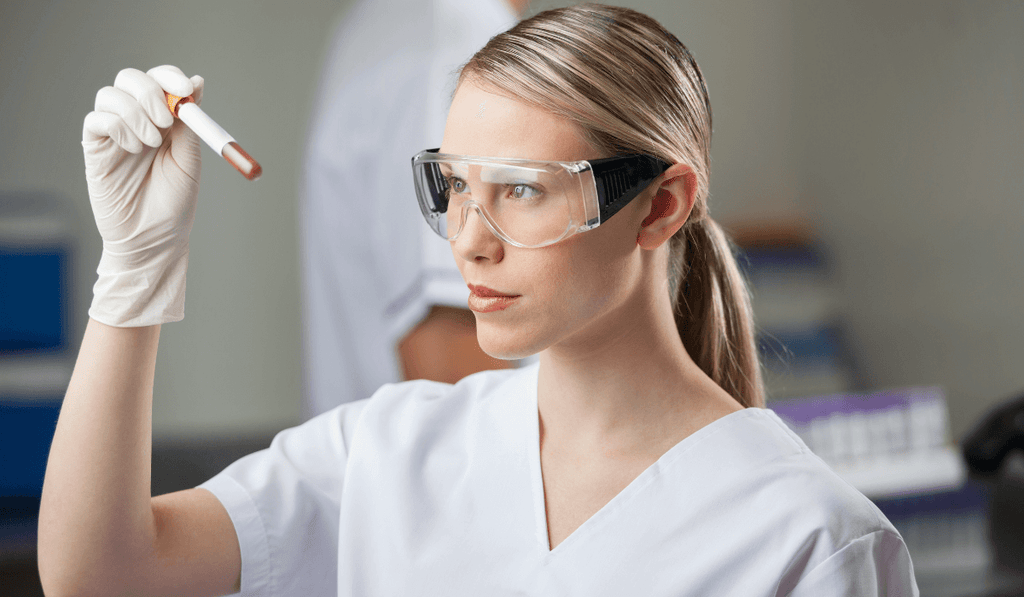[Veterinarian's explanation] Explaining the tests performed at veterinary clinics!

Home » Column » [Veterinarian's explanation] Explaining the tests performed at veterinary clinics!
When you visit a veterinary clinic, your pet will undergo a number of tests.
Since dogs and cats are often left in the care of veterinarians during examinations, many people may be curious about what goes on inside.
This time, we will explain in detail from a veterinarian's perspective the tests performed at animal hospitals!
In addition, Bow Wow Place offers a wide range of food snacks and care products that contain the nutrients needed to stay healthy.
Please use the correct information to help maintain the health of your beloved dog!


1. Blood tests, urine tests, and stool tests
Blood tests
This is a test in which blood is taken and its components are examined.
The amount of blood drawn will vary depending on the item being examined, but for general tests performed in the hospital, 1 to 2 ml of blood is often sufficient.
When taking blood samples, the nurse will "hold" the dog or cat so that it doesn't move suddenly. The nurses are used to handling dogs and cats, so there is nothing scary about it, so please don't worry.
Blood tests can reveal whether or not you have anemia, damage to organs such as the kidneys or liver, whether or not you have diabetes, and the degree of your body's ability to stop bleeding.
In addition, allergy tests and genetic tests for infectious diseases may be outsourced.
Urine test
Urine tests include urine stick tests, specific gravity tests, and sediment tests.
A urine stick test can reveal information such as urine pH and the presence of sugar in urine.
The specific gravity test measures the concentration of urine (how concentrated it is in the kidneys). The sediment test looks at the urine under a microscope to check for the presence of bacteria and crystals.
There are three ways to collect urine: either by having the owner bring back a sample of natural urination, by inserting a urethral catheter to collect the urine, or by inserting a needle from the surface of the body into the bladder (intravenous urine collection).
When collecting urine from natural urination, there is a risk of bacteria from the environment being mixed in during the collection process, so catheter or puncture urine collection will give more accurate results.
Stool test
Stool tests involve examining the stool under a microscope to check for the presence of parasites and the balance of intestinal flora.
Parasites and other conditions can be concentrated in stool, so there is a risk that they may be missed in a single test, and multiple tests may be conducted.
By looking at the balance of your intestinal flora, you can detect bacteria that cause abdominal pain.
If your pet has diarrhea, it is likely that we will not be able to collect a stool sample properly in the vet, so we recommend that you bring a sample of your pet's stool from home to the vet.
2. Imaging tests

Imaging tests that can be performed without anesthesia include X-rays and ultrasound.
◆ X-ray examination (X-ray examination)
X-rays can detect abnormalities in the shape of bones, chest, and abdomen.
Because the position in which the X-ray is taken is very important during an X-ray examination, sedation may be necessary if pain is present, such as after a fracture.
If the x-ray is taken without sedation, the veterinarian and nurse will hold your dog or cat's body in place while the x-rays are taken.
◆ Ultrasound examination (echo examination)
An ultrasound scan provides a detailed view of the structure of your abdominal organs and the movement of your heart.
If the animal has a thick coat of hair, the air on the surface of the body may get in the way, making it difficult to examine properly, so if a more detailed examination is needed, it may be necessary to shave the hair on the abdomen or chest.
Regardless of whether the hair has been shaved or not, the examination is performed by using alcohol spray and ultrasound gel to firmly attach the machine to the skin.
Don't worry if your pet's fur is wet after the examination, as this is most likely due to the effects of the alcohol spray.
When performing an ultrasound examination, the nurse will hold the patient in a position where he or she is lying on their side or back.
3. Anesthesia examination

Examples of examinations that require anesthesia include CT scans, MRI scans, and endoscopies.
The reasons why anesthesia is needed for these tests include relieving your dog or cat of stress during the examination and improving the accuracy of the test by immobilizing their body with anesthesia.
Because general anesthesia involves risks, in most cases "pre-anesthesia testing" is required before these tests are performed, which involves blood tests, X-rays, ultrasound scans, etc. to determine the risk of anesthesia.
◆ CT scan
A CT scan uses x-rays to create cross-sectional images of the body to check for abnormalities.
They are particularly adept at finding lesions in soft tissue (organs such as the lungs, liver, and kidneys), and if necessary, inject a contrast agent through the blood vessels to examine the characteristics of cancer, etc.
The test is relatively quick, usually taking just 10 to 15 minutes to complete.
◆ MRI examination
MRI scans use a strong magnet and radio waves to generate a magnetic field.
They are particularly good at finding lesions in the brain and spinal cord, and will also use contrast agents as necessary. If more areas are to be photographed, the examination will take longer, and may take 1-2 hours.
Endoscopy
Endoscopy is divided into upper endoscopy, in which the endoscope is inserted through the mouth, and lower endoscopy, in which the endoscope is inserted through the anus.
If you want to examine the entire digestive tract, the upper and lower parts may be done simultaneously.
In both tests, an endoscope is inserted into the digestive tract and the condition of the mucosa is observed with a camera, while tissue from the surface of the digestive tract is taken with something called a "biopsy forceps" and sent for pathology testing.
In a pathology test, the tissue is examined in detail under a microscope to identify the cause of inflammation, etc. The examination time depends on the number of biopsies taken, but it usually takes about an hour.
summary

Here we provide detailed information about the tests carried out at our veterinary clinic.
There are also various other tests such as skin tests and eye tests, so I would like to explain them again if the opportunity arises!
At Bow Wow Place, we offer a wide range of additive-free, safe and secure dog food.
Get 2% points back when shopping at Bow Wow Place!
If you would like to search safely for your partner's dog and cat food, treats, and care products, please visit Bow Wow Place.


